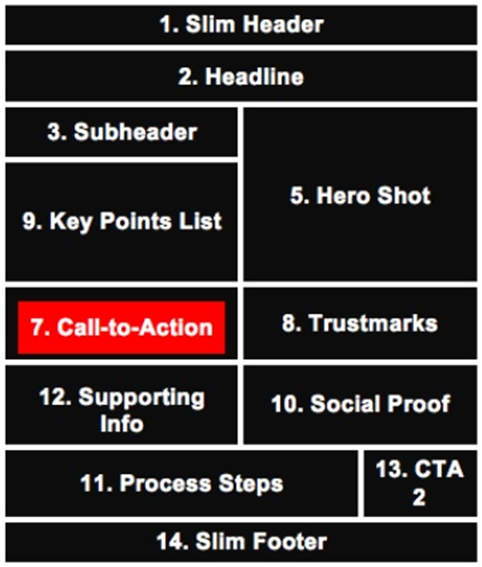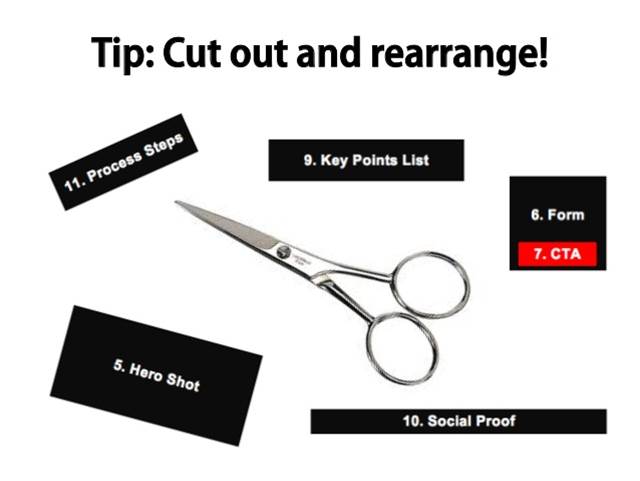Optimizing Landing Pages for Conversions
Landing page optimization is a vital part of successful online marketing. Far too often, people overlook the optimization of their landing pages. Does your website or advertising campaign receive a significant amount of traffic with an efficient click-through-rate (CTR), but lack in conversions? Does your conversion rate get you down? 🙁 Well, your landing page (LP) is probably one of the majority of landing pages that people overlook the LP conversion optimization process. If you are driving qualified leads to your website and not receiving an acceptable conversion rate, you should re-visit what I like to call the “LPCO process” which is the Landing Page Conversion Optimization Process.
The LPCO Process
Requirements
You should know your KBR and follow requirements before you begin designing your landing page. Your web page should be the medium between your business’ goals and the user’s goals.
“Conversion rate is a measure of your ability to persuade visitors to take the action you want them to take… For you to achieve your goals, visitors must first achieve theirs.” -Bryan Eisenberg
A good landing page fulfills the following questions:
- What will the user will get? This must be relevant to what the visitor was searching for
- Why will the user will love it? Clear explain and certify the value-added.
- How will they use it? This is the action you want the visitor to take. Make it as simple as pie for them to complete your conversion funnel.
Design
Once you have the requirements of your landing page figured out, it is time to consider (and re-consider) the design of your landing page. The design process should be a thing of collaboration and daily review. A good landing page should contain at least ten of the fourteen following landing page essentials:
LANDING PAGE “ESSENTIALS”
- Reasonable header – Your header should not take up even close to a quarter of your landing page above the fold.
- Headline
- Sub-header
- Directional Cue (Optional)
- Image – “Hero Shot”
- Form (Optional)
- *Call-to-Action – THIS IS A MUST!
- Trust-marks – what make your a credible resource? Adding reviews, testimonials, etc. improves your credibility.

- List of Key Points
- Social Proof
- Process Steps (Optional)
- Supporting Information (Optional)
- Follow-Up CTA (Optional)
- Reasonable Footer- Slim > Large (Similar situation to the header)
Source: Angie Schottmuller
IMPLEMENTATION
So you’ve decided on a design, and now it is time to implement it. This is the exciting part. Create and implement your new landing page design, but don’t close the book quite yet. Just because you have created a new landing page, doesn’t mean your work is done. In fact, the work after launch is the most important.
Verification
Now that your new landing page is in place, it time to verify that it is working properly. This is done not only by visiting the landing page and completing the conversion process through the perspective of your different customer persona’s, but by also by doing a deep dive into the analytics. If you haven’t already, create custom reports that analyze the success of your new landing page. The success of your landing page should be determined by the analysis of the data your landing page records. The deciding factors should encompass the landing pages conversion rate and your key performance indicator (KPI) along with your key business requirement (KBR).
“90% of web analytics success lies in the people
you have behind the tools.” – Avinash Kaushik
Based on your results, you should begin testing improvement. TEST, TEST, TEST. And then test it some more. Google Analytics provides an easy solution to testing landing page designs – (Experiments in Google analytics). Testing different landing page designs makes LPCO an ongoing process.
“Learn from yesterday, live for today, hope for tomorrow. The important thing is not to stop questioning.” -Albert Einstein
Maintenance
The Internet is continually updating and improving, and your landing page should be doing the same. Keeping your landing page up to date is important. Broken links, whether they are on accident or due to other changes on the web, are extremely frustrating to the viewer and are not at all user friendly. You should continue to enhance your landing page through maintenance and updates.




